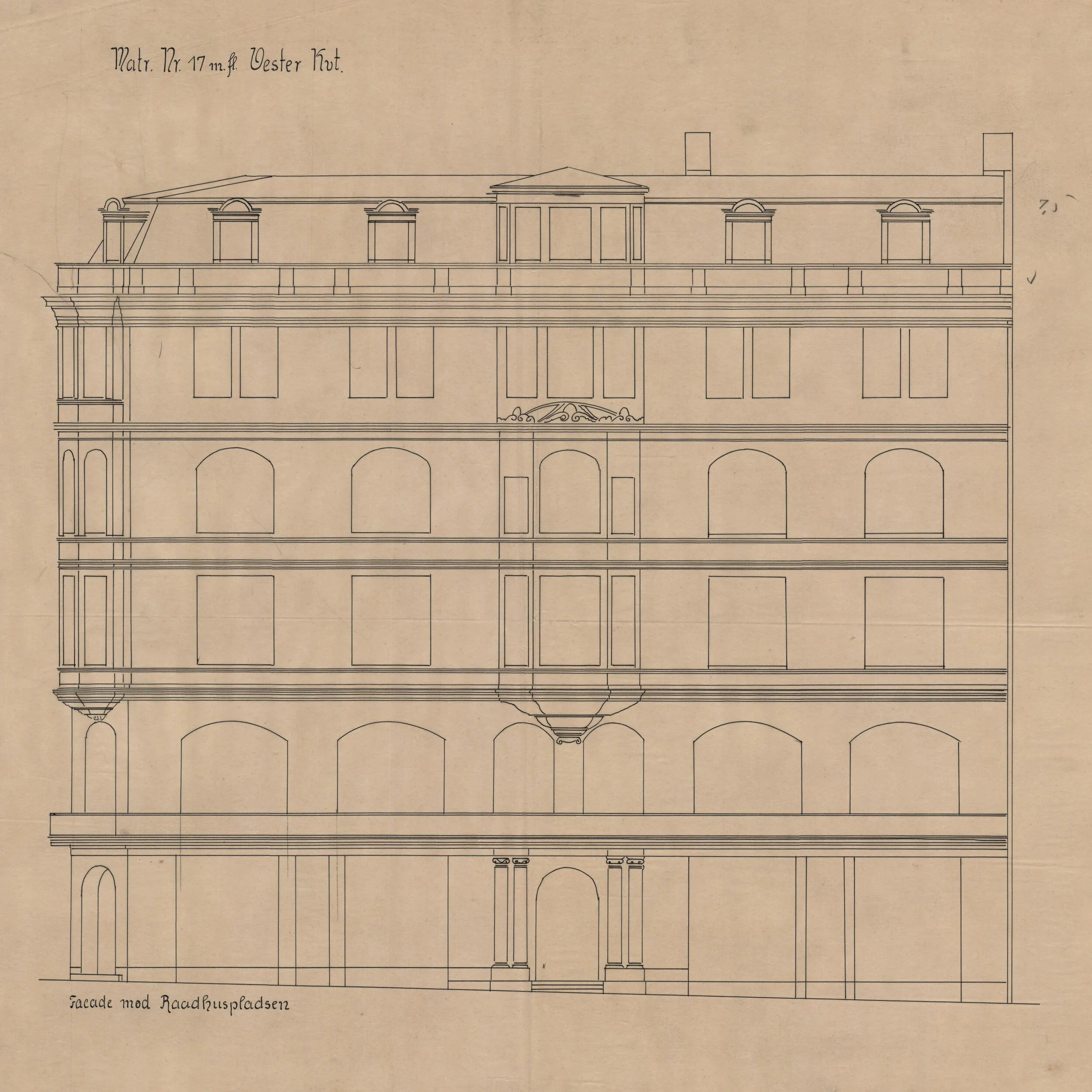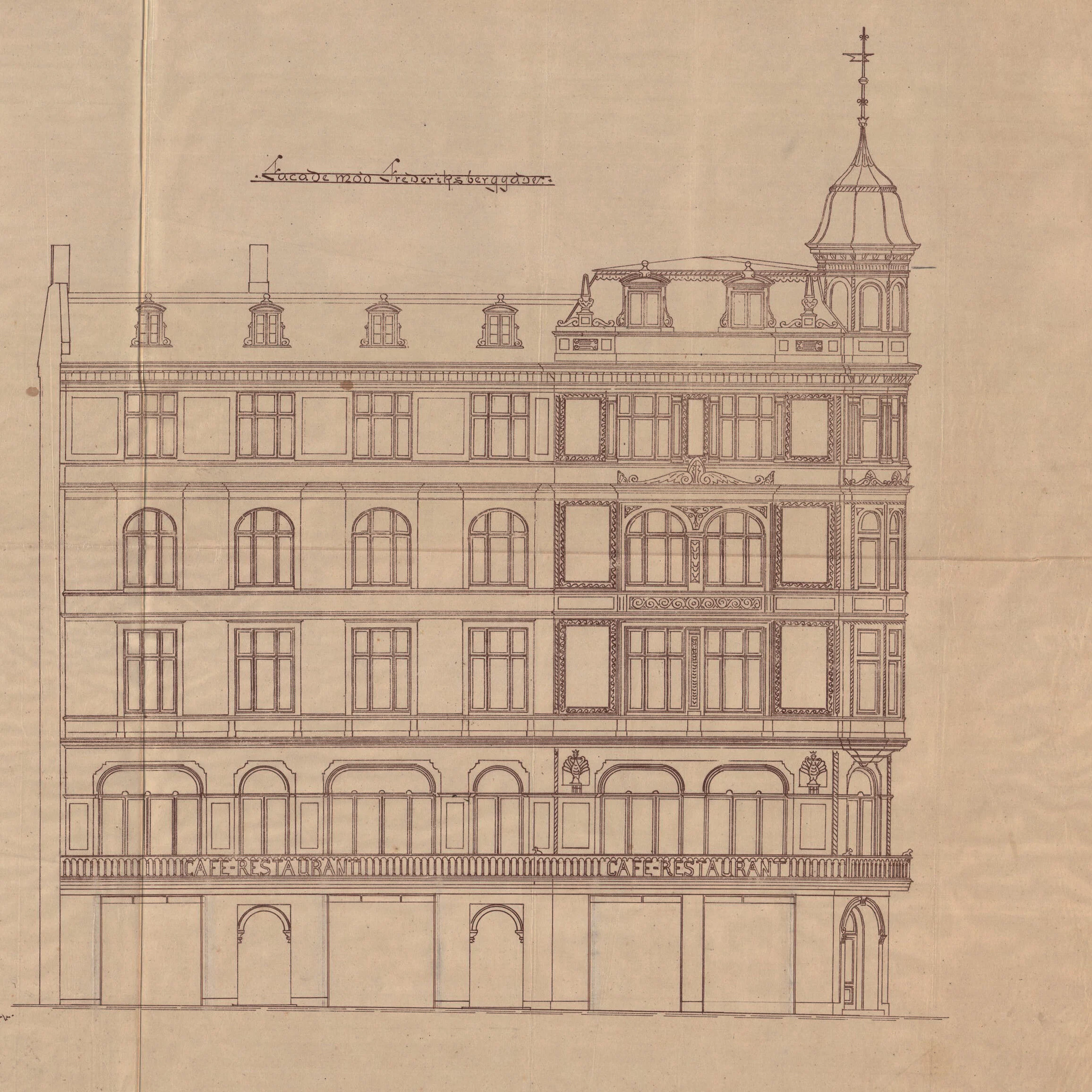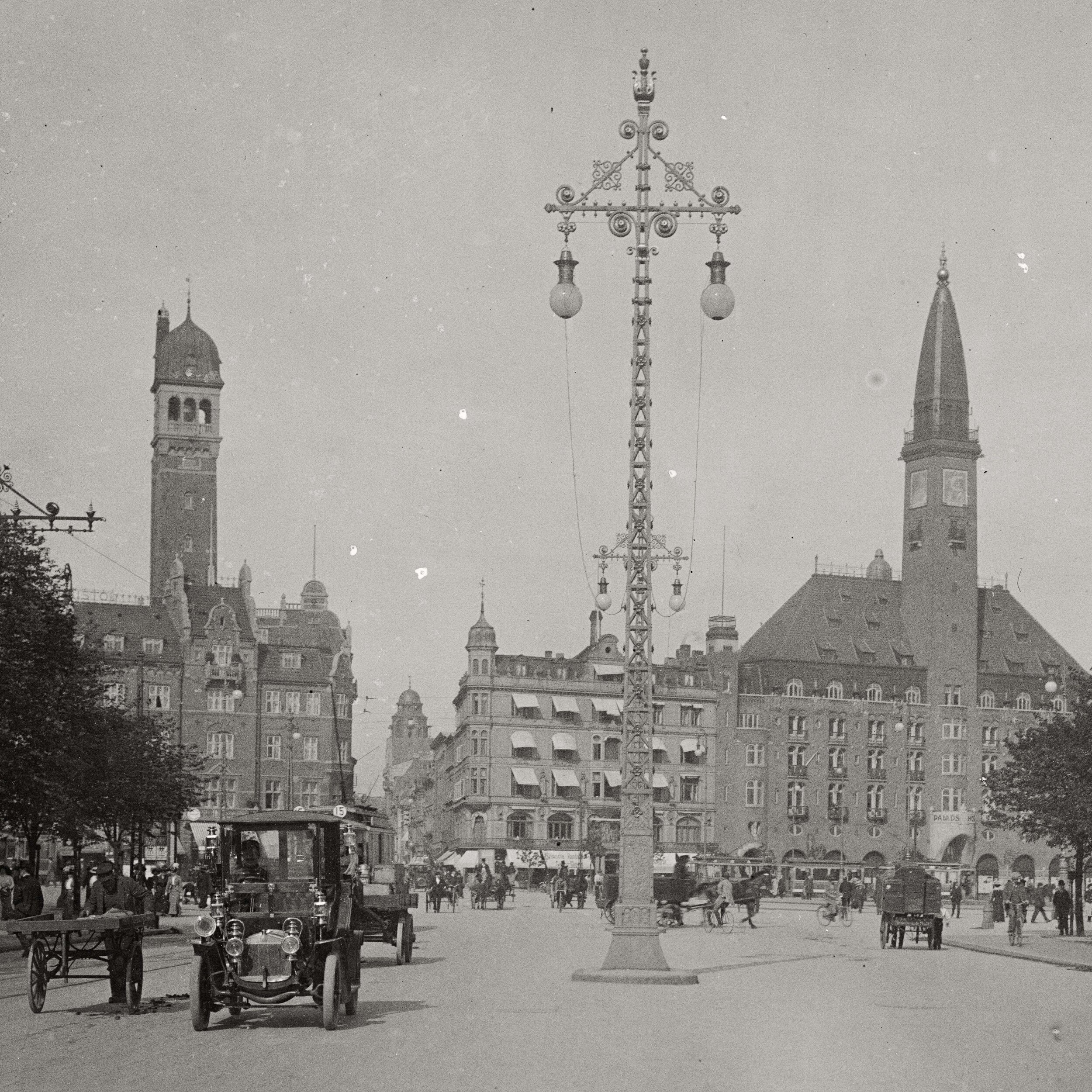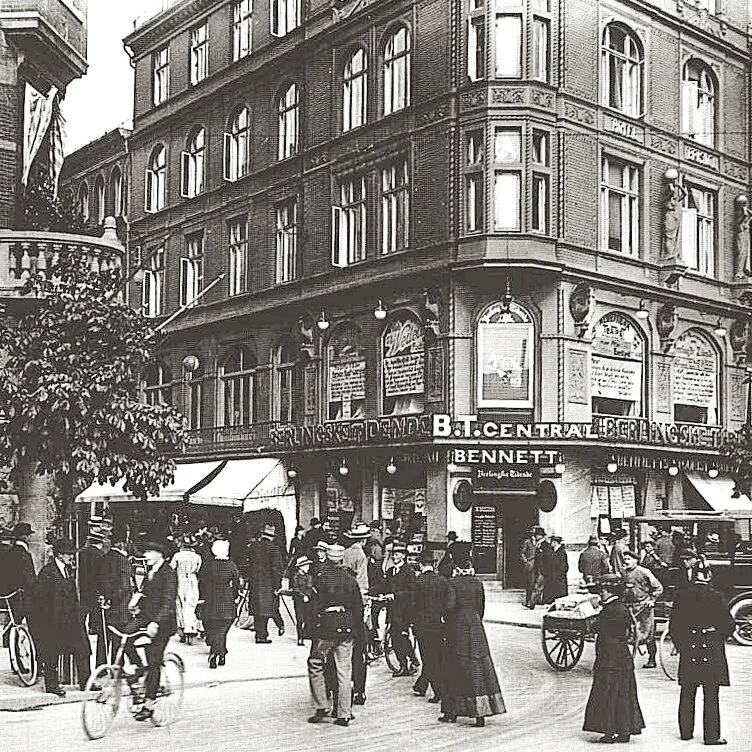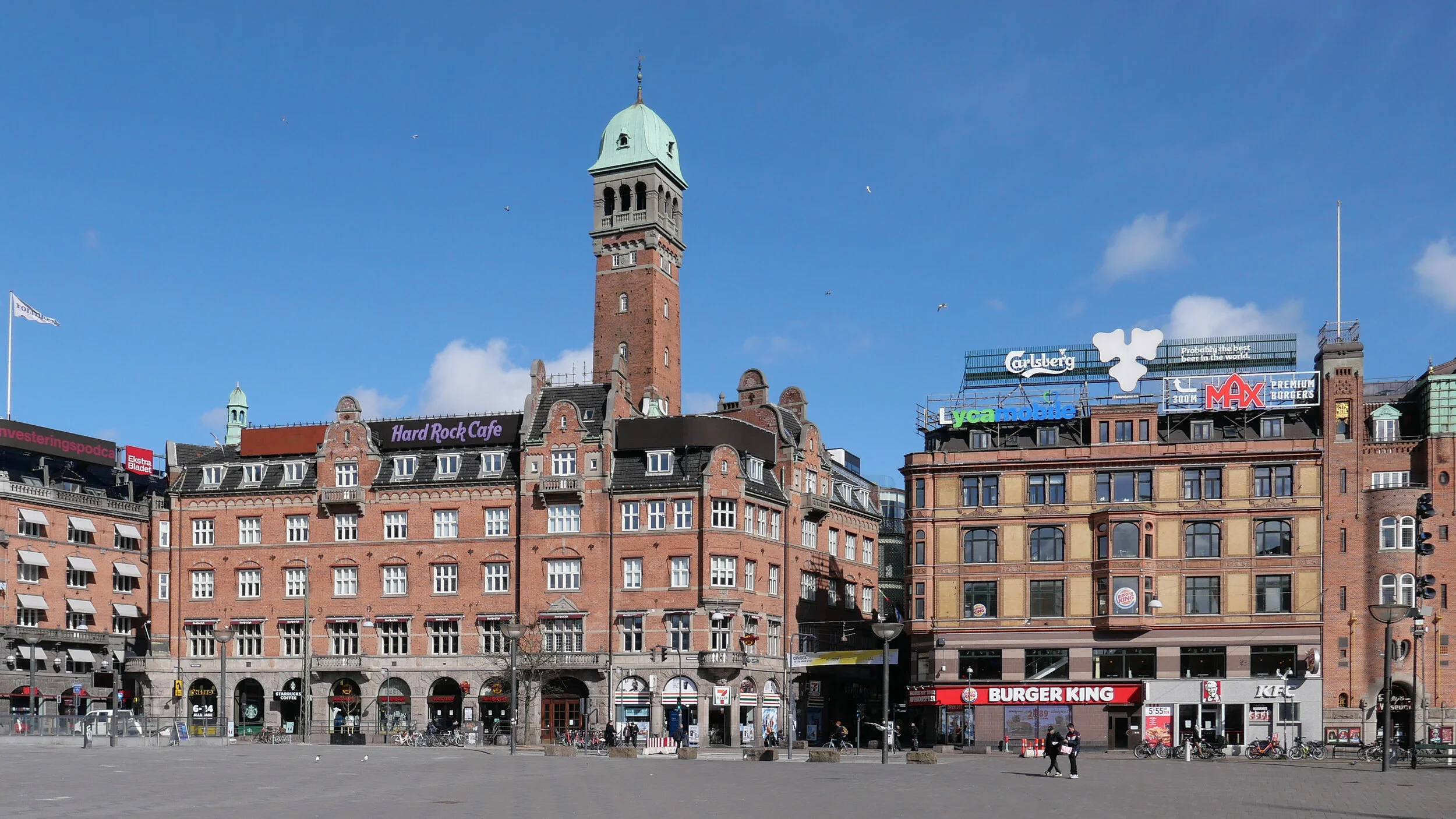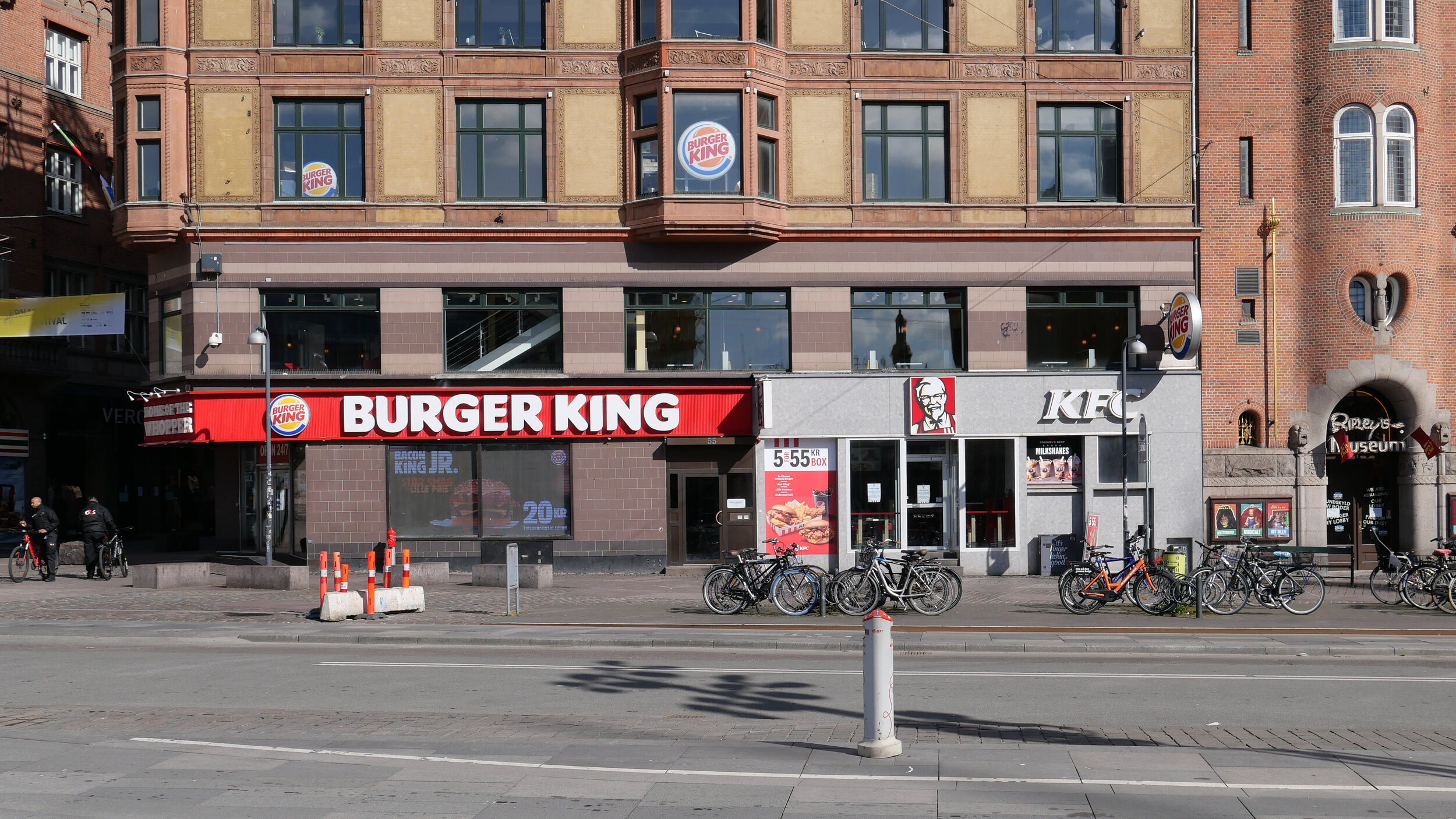well and truly burgered
/There are four large buildings across the east side of Rådhuspladsen - the square in front of the city hall - and all date from around 1900.
The facades are not in a straight line but follow the line of old building plots that were originally inside the defences and looked out towards the defences and this explains three distinct alignments of buildings along the east side of Vester Voldgade …. the street that follows the line of the road that originally ran round the city immediately inside the defences.
Historic photographs show the earlier houses here that survived until well after work on the city hall had started.
The most prominent building on the east side of the square is the Palace Hotel close to the city hall. Designed by Anton Rosen, where work began in 1907 and was completed in 1910.
The hotel has a high and prominent tower and the other obvious building on the east side of the square also has a tower and was also a hotel. The Hotel Bristol was designed by Hans Nielsen and was completed in 1902 but, following a fire in 1917, the hotel closed and the building became the offices of a major insurance company.
The third major building on the east side of the square is what is now Politikens Hus although it is not as prominent and the architecture is not as dramatic or as distinguished as the two hotels. It was designed by Philip Smidth and completed by 1907 and it has been the offices of the Danish newspaper Politiken since 1912.
The fourth building on the east side of the square was designed by Philip Smidth as the Metrolpol Hotel but was for many years the offices of the newspaper Berlingske. It has suffered most from inappropriate and badly-executed alterations and most people walking past would hardly give it a second look.
After Berlingske moved out of the building, the commercial spaces on the ground floor became food outlets and shop fronts were altered drastically but, and much worse, good architectural details - including a porch with columns to the door facing the square, an ornate ironwork balcony across the main floor and what appear to be caryatid figures between the windows and peacocks with fanned out tails in large medallions - have all been lost.
The building also had a corner turret and decoration above the cornice so it formed a good entrance to the important shopping street of Frederikdberggade. Since the street was pedestrianised in the 1960s, most people know this as Strøget or The Walking Street.
There have been several articles in newspapers over the last year or so, commenting on the scruffy appearance of this west end of the Walking Street and the poor quality of many of the shops that have suffered from corporate vandalism.
I'm not being a snob or an elitist. Actually it's the other way round. These companies are implying that just because they are selling cost-conscious products to a popular mass market then those people don't want or need good thoughtful design.
And the word is thoughtful. It does not cost anymore to think things through carefully in a well-considered way before work starts to do what is appropriate.
Imposing a brand design where ever and whatever the situation is lazy and simply ensures the quick and easy bit of the profit margin rather than considering any long-term investment in the location. Essentially, shop frontages like this are the equivalent of standing in the street and shouting at people walking past.
This building should not be allowed to deteriorate further and a major and sympathetic restoration would make a huge change for the better.
I'm not a great fan of Starbucks when they impose their corporate style on a building in a historic street but, at least here, on the building immediately north of the start of Strøget, both Starbucks and Hard Rock Café have done a much more subtle job on the street frontage and seem to have maintained their brand image but without that being at the expensive of the historic building they occupy or by undermining the quality of the streetscape.
see also the recent post on Hirschsprung cigar shop at the other end of Frederikdberggade and the post on the Stelling shop on Gammeltorv.


